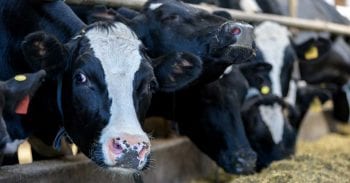4 Jun 2021
Responding to Defra’s consultation on the next phase of its bTB control strategy, association says plans to scale back culls would jeopardise progress made so far.

Image © andyballard / Pixabay.
The BCVA is “standing firm” on its stance that culling badgers must remain the primary weapon in the fight against bTB.
Responding to the results of a consultation by Defra on the next phase of its bTB control strategy, the association criticised plans that could see culling reduced or even phased out.
Last year, culling licences were issued in 44 areas with almost 45,000 badgers killed; however, Defra hopes to have a cattle vaccine ready for deployment by 2025, and will cease issuing new culling licences in 2022, and potentially revoke new licences granted in 2021 and 2022 after two years of culling.
So far more than 145,000 badgers have been shot or trapped since the cull began in 2013 – and despite the promise to stop issuing new licences after 2022, those opposed to the cull fear as many as 500,000 badgers could be killed before the controversial programme comes to an end.
However, the BCVA has been a long-term supporter and believes plans to scale back the cull could jeopardise some of the progress made so far in the Government’s bid to stamp out bTB from the national herd by 2038.
A statement said: “We were pleased that some of the planned measures are in line with our recently published bTB document and consultation responses, and we can broadly support some of the proposals during this consultation.
“These include the introduction of mandatory post-movement testing of cattle from higher-risk regions, and for a revision of the current policy towards using the more sensitive interferon-gamma test in the High Risk Area and Edge Area.
“However, in our consultation response we cited serious concerns surrounding the lack of significant evidence to support a change to the current wildlife control strategy.”
The statement added: “BCVA illustrated how several proposals could cause disruption to ongoing trials, or even cause regression in the progress that has been made to reduce incidents of bTB on farms throughout the UK, inflicting further hardship on the farming industry, who are already crushed by the impact of this devastating disease.
“This is particularly emphasised with the plan to cease the issuing of new badger disease control licences in 2022, and that the new licences granted in 2021 and 2022 could be revoked after just two years of culling.
“A strategy with proven efficacy could unravel, with regressive results and serious loss of engagement within the farming industry.”
In its response, the BCVA also raised serious objections to the proposal that recently issued licences could drop from four years to two years.
Citing the Randomised Badger Culling Trial (1998-2007), it said clear evidence existed that proactive badger culling over a large area can lead to an overall reduction of bTB in cattle.
The statement continued: “In 55 culling operations where spoligotypes (genetic variants) were identified in both cattle and neighbouring culled badgers, 51 of these (94%) shared the same spoligotype.
“Within the original consultation document, it is noted that OTFW [officially TB‑free status withdrawn] incidence dropped by an average of 27% over two years but this incidence decreased further to 51% after four years.
“While the BCVA and its members share and recognise the ambition to reduce wildlife culling where evidence indicates that other strategies – including badger vaccination – can provide complementary safeguards, we are compelled to stand firm on our current position that culling must remain the principal means of controlling bTB infection from badgers in areas of high or rising infection.”

The culling of a protected species is an issue that divides the profession, and those opposed to the policy do not believe it to be an effective tool in the fight against a disease estimated to cost the cattle industry and the UK taxpayer more than £150 million a year.
Former government vet and bTB expert Iain McGill – along with Mark Jones, head of policy at the Born Free Foundation – issued their own statement in which they disputed claims made by the BCVA regarding the efficacy of culling badgers as a control measure.
The statement said: “New evidence indicates that the badger cull has had no impact whatsoever in controlling the disease in cattle, whereas cattle measures have had impact.
“There is much to support in the BCVA’s position on cattle measures, but there is no ‘proven efficacy’ in killing badgers as they claim.
“Rather than having ‘ambition’ to see an end to the killing of badgers, the BCVA continues to cling to the Victorian concept of ‘stamping out’, and shamelessly promote the pointless perpetuation of this animal abuse.
“It is precisely because of the severe toll which bTB controls have upon farming communities that only precision tools be used, rather than every blunt instrument in the toolbox.”
In their statement, Dr McGill and Mr Jones went on to call for a consultation on the compulsory reduction of cattle movement and more effective pre-movement screening using more sensitive tests for bTB.
The statement continued: “The woeful 50% sensitivity of the Edwardian SICCT [single intradermal comparative cervical tuberculin] skin test currently used ensures the transport of bTB-infected cattle to new herds.
“The Government are not even consulting on remedying this, focusing instead on post-movement testing – long after the horse has bolted.
“They are similarly not consulting on the use of the highly sensitive and specific Actiphage, a molecular test detecting live Mycobacterium bovis, which would greatly assist with identifying the huge undetected reservoir of bTB infection in cattle herds left behind by the insensitive and outdated SICCT test.”